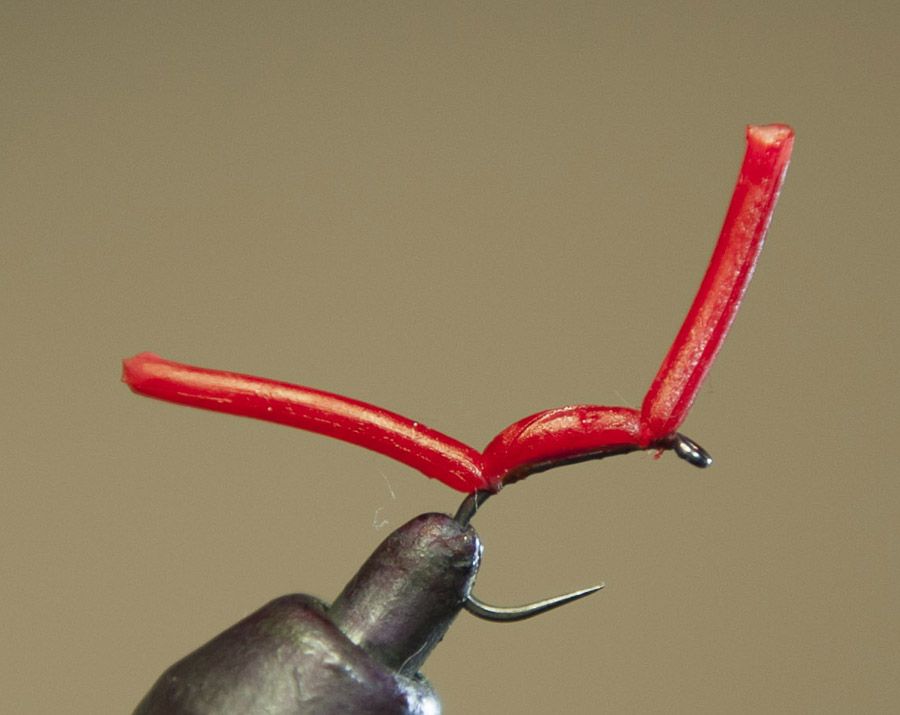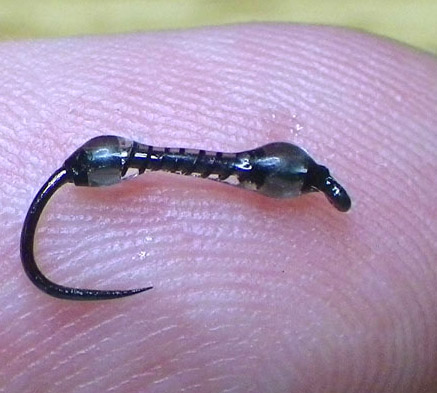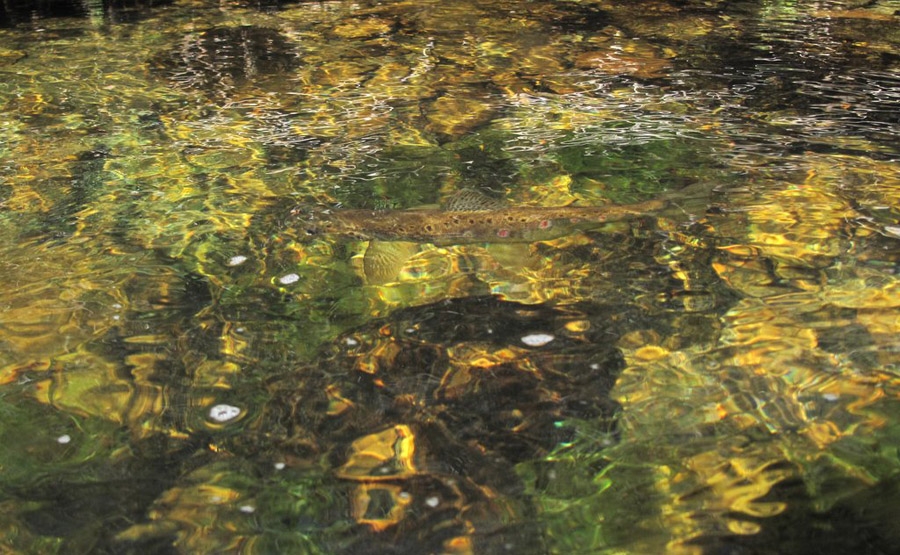Shortly before setting off on a trip to fish the Elandspad stream near Cape Town and the upper Olifants River in the Witzenberg Mountains near Clanwilliam, Ed Herbst asked me to try three flies he had tied, a Squirmy Wormy, his version of what Jeremy Lucas calls a Plume Tip, but which is also known as a Shuttlecock, and his Simulid Nymph, an all-synthetic combination of beads, wire and UV light-cured acrylic resin.
Click in images to enlarge

Two of Stephen Dugmore’s split cane rods used on this trip.
I tried both the Shuttlecock and the Squirmy Wormy but have to say with little success. The water levels, were quite low and I found the Squirmy quite a heavy fly. It lands with a serious plop so you need to cast it well ahead of where you think a fish might be. I think for me it might be better as a bigger water fly - maybe the Sterkspruit or Kraai Rivers in Barkly East.

The Squirmy Wormy – a rubber version of the San Juan Worm

Gog and Magog (above) the rock formations on the Elandspad where Stephen Dugmore fished the Squirmy Wormy and, below, an unimpressed Elandspad rainbow trout.

I was surprised not to have more luck with the Shuttlecock. Gordon van der Spuy has been achieving significant success with it of late and it has almost supplanted the Para RAB in his affections.
http://www.riverflybox.co.uk/Simple%20CDC%20Shuttlecock.html
Ed’s version uses two delicate rubber filaments – “Tentacles” marketed by the Montana Fly Company – as tails and they add significant movement. They are separated by Demmon Hot Spot thread covered with UV epoxy. The thorax of the fly, below the CDC feathers, is made with black Razor Foam to give the top half of the fly increased buoyancy.
At first it sits beautifully in the water and looks very edible.

Ed Herbst’s rubber-tailed version of the Plume Tip/Shuttlecock.
After a while the CDC feathers – three in this case - start getting wet and then the fly starts to sink. I tried dusting it with Loon 'Top-Ride' desiccant powder, but I found the body then floats as well which defeats the purpose. I am going to give it another try next time.
I think a possible improvement to the fly might be if you could get a tiny bit of weight into the tail to pull the fly into a more vertical stance – Swiss CDC master Mark Petitjean uses a few turns of silver wire at the bend of the hook on his emerger patterns for this purpose - so that the fly sits upright even when dusted with floatant. Possibly more of a taper to the rest of the body would also be good and maybe a turn of CDC under the shuttle or something like that to give it a little bit of a halo and movement in the thorax area. Ed points out that he ties this fly on the Orvis straight eye, big eye hook so that it can be combined with a stop knot such as the Surgeon’s Swivel. The fly is then free to pivot on the tippet which holds it vertically in the water – a technique first exploited by Frank Sawyer in his Bow Tie Buzzer and subsequently used by Ed in his Hanging Emerger pattern

Camouflage – a brown trout on the Upper Olifants River
I had some success with a delicate little Para RAB tied by Gordon van der Spuy. As a test I tried it over exactly the same water as the Shuttlecock and generally got more interest on the Para RAB.

An Olifants River brown trout which took the Para RAB
With the water so low on the upper Olifants, it wasn't great for nymphing so I didn't use the Simulid Nymph there.

Split cane on the Upper Olifants
On the Elandspad I forgot to take the Shuttlecocks (which I had stuck in my other hat). I tried the Squirmy Wormy for a short while but again with little success.

An Elandspad rainbow trout which took the Simulid Nymph

Ed Herbst’s Simulid Nymph
But the Simulid! Wow, that was something. I fished it on a dropper under a Paraloop dry. The fish ate it like mad. I got a few on the dry, but the fish clearly really liked the Simulid more. On almost every cast the Paraloop would dip under. What a treat. It is definitely going to be my go-to dropper fly from now on.
( To see more of Stephen’s fly rods visit his website at http://www.freestonerods.co.za/ )



